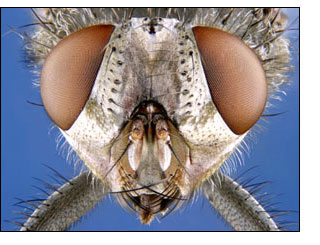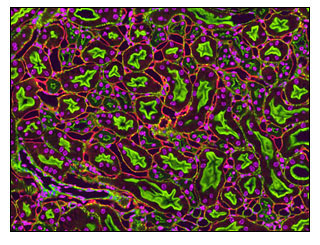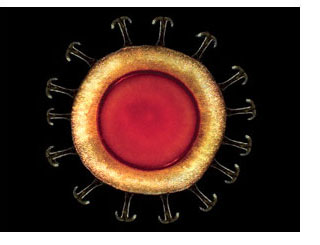NEW YORK, Oct. 12 -- Bristling with sharp, sensitive antennae, bulbous eyes with 4000 lenses and a mouth that sucks up food using a bellows-like pump in its head, the common housefly is one of 119,500 known species of fly. It's also the subject of the winning image in Nikon’s 2005 Small World Photomicrography Competition.
"Nikon's Small World provides a unique opportunity for people to see ordinary things in an extraordinary way," said Lee Shuett, executive vice president, Nikon Instruments. "Modern microscopes have become information technology platforms that combine sophisticated optics, internet communications and advanced software to unveil amazing new worlds in miniature."

EYE OPENER: First prize went to Charles B. Krebs, a specialist in photomacrography and photomicrography, for his "Muscoid fly (house fly)," (6.25x) reflected light. (Charles B. Krebs, courtesy of Nikon)
First to third place winners, respectively, are: Charles B. Krebs, owner of Charles Krebs Photography in Issaquah, Wash., for his entry, "Muscoid fly (house fly)," reflected light; Thomas J. Deerinck, a microscopist with the National Center for Microscopy and Imaging Research, University of California-San Diego, "Quantum dot fluorescence image of mouse kidney section," fluorescence (2-photon); and Stefan Eberhard, a researcher at the Complex Carbohydrate Research Center, University of Georgia, "Crystallized vitamin A," polarized light.

Thomas J. Deerinck, Quantum dot fluorescence image of mouse kidney section (240x) fluorescence (2-photon). (Thomas J. Deernick, courtesy of Nikon)
Also among the 30 winners were Chiedozie Ukachukwu (13th place), a biomedical photographic communications student at the Rochester Institute of Technology, who submitted a darkfield illumination image of a Bryozoan statoblast, a small aquatic animal; Tracy E. Anderson (honorable mention), a staff member of the Imaging Center College of Biological Sciences, University of Minnesota, for an image of Velcro being pulled apart (94x stereomicroscopy with epi-ring illumination); and Catherine Russell (honorable mention), of the department of polymer science and engineering, University of Massachusetts Amherst, for a 60x reflected light image of an electric field placed across layers of polydimethyl siloxane and polystyrene on a polished silicon wafer.
Images were selected from over 1700 photomicrographs by scientists and artists from around the globe and were judged by a panel of experts. Winning images from the contest, founded in 1975 to recognize excellence in photography through the microscope, will comprise an exhibition to tour science and art museums across the nation beginning Jan. 1.

Chiedozie Ukachukwu's entry, a darkfield illumination image of a Bryozoan statoblast, won 3rd place. (Chiedozie Ukachukwu, courtesy of Nikon)
This year's judges included Jennifer Waters, PhD, microscopy director at Harvard Medical School; Todd James, illustrations editor for National Geographic magazine; Emily Harrison, photography editor of Scientific American magazine; and Alexey Khodjakov, research scientist at the Wadsworth Center for the New York Department of Health. Michael Davidson, director of the Optical and Magneto-Optical Imaging Center at the National High Magnetic Field Laboratory at Florida State University, was a consultant to the judges.
To view the winning images, visit: www.nikonsmallworld.com.
A free 2005 Small World screensaver is available at: http://www.microscopyu.com/software/screensavers/smallworld2005.html